


Tags : Mathematician, Economist, Differential Geometry, Game Theory, Artificial Intelligence, Military Theory
- Text Size +
Imagine our world without Mathematics and Science? How would it be? I believe we would be still relying on inadequate transportation system, medieval era communication methods, facing uncontrolled economy and strong dependence on sorcery for healing the sick. Since ages, Mathematics has filled the gaps in our scientific research and broadened the technological possibilities.
The world without numbers would be deadening and evolutionarily decelerated. Invention of Mathematics was evident! If we look around us we are surrounded by Nature's Math. We are the third planet in our solar system which we call home; close enough to the Sun for sustaining life on earth and far enough to be shielded from intolerable heat and life-threatening radiations. Our ecosystem is balanced by right combination of gases to breathe in and atomic compounds which give us water. We have abundant natural resources in form of vegetation and animals to meet our basic needs [Food + Clothing + Shelter]. Is God the biggest mathematician of all? Probably yes….Probably no [for non believers]
Modern day Prophets of science fiction, eminent physicists, scientists and even some evolutionary philosophers staunchly believe that our existence since the “Big-Bang” to this very day is statistically impossible. Bonkers? Let me put it this way, you reading this article on a particular device, in some place, at this moment shouldn't be happing. But defying all odds, here we are… the most intelligent species in the entire solar system or perhaps in galaxy.
Man's observation of nature, curiosity and desire to attain more from it, gave birth to Mathematics and Science. Historians believe that humans started counting 50,000 years ago, which over the course of time lead to many scientific, economic and engineering inventions and logistical solutions. These projections were merely based on human's migration patterns. Ancient civilization of Indus Valley, Egypt and Greece had thrived using mathematical principle. It is evidently clear from the coins discovered from Indus Valley, practical usage of Greek geometric theorem and architecture marvel of Pyramids dating more than 5000 years.
Modern academicians define Math as “(science) a science (or group of related sciences) dealing with the logic of quantity and shape and arrangement.” But for a layman it's a complex matter involving numbers and geometric shapes. Few have mastered the subject, while an absolute majority of people, detest Mathematics due its complex nature. From computing distance between earth and celestial space bodies, to disentangling global economic woes, mathematicians have played a significant role in the early 20th century and continue to unravel the mysteries around us.
The bloodiest World War II was not only a war of Nations, but a contest between the scientists and mathematicians on both the sides; it was a war of wits! In the flaming war the geeks became the new heroes! Mathematicians not only helped in tracking down German U-boats [WWII stealth submarine] but also broke the alleged splinter-proof Japanese Naval ciphers.
If you are a staunch math lover and are looking forward to read this piece of literature to quench your thirst of Math problems, then I am sorry to disappoint you. This chronicle is purely about a Math genius John Forbes Nash Jr., whose contribution in the field of Economics, Computer Programming and Mathematics itself is commendable. Irrespective of his three decade long struggle with schizophrenia [a cancer of mind] John Nash's contribution to Math community is unmatched.
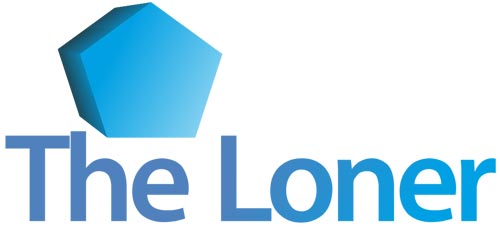
the loner

John Nash Jr. opened his eyes on 13th June, 1928, in Bluefield Sanatorium. Born to John Nash Sr. and Virginia Nash, the baby boy was baptized at a local Episcopal church at the age of 2. The proud new parents adored their first child and fondly called him Johnny.
Absolve from malady, the healthy infant grew up in an ideal family environment consisting of his maternal grandmother, aunt and cousins, who showered their unconditional love and care for the baby. John's younger sister Martha was born two years later on 16th November. An adorable Martha completed the Nashes, but family's affection for John was irreplaceable. Nothing distinctive to the naked eye, but Johnny seemed to be quite special.
Financially, the Nashes belonged to a single-income-upper-middle-class segment. Despite the great depression of 1929, John senior managed to keep his job and a steady flow of income. The couple enjoyed a great lifestyle and together they attended many social gatherings, society clubs for a game of bridge or simply to catch up the latest gossip. Apart from socializing, John senior and Virginia never shied away from their parental responsibilities, for them their children were the sole priority. Virginia being a professional teacher before her marriage, took up the responsibility to educate her son from an early age.
By the age of four John was able to read and was enrolled in a local kindergarten. Skipping John's half grade early in Elementary School, Virginia home schooled her son till he reached High School.
As far as the Nashes remember, John was a lonesome kid who always played alone with his toy airplanes and matchbox cars. It's quite so common to find kids at a younger age to behave differently, but Nash Jr. (whom we will refer to as Nash now onwards) was a rare specimen. By the age of 7 he had turned into a bookworm and started behaving slightly odd in the presence of peers. Nash hesitated to blend with other kids of his age comfortably; part reason of his reserve nature was due to lack of co-ed schooling or mental makeup.
Nash's younger sister Martha was strikingly opposite to him. She was quite normal and playful with her cousins; she spent time playing the usual childhood games like cutting patterns out of papers, playing hide-and-seek in the attic, football etc. The kid sister always urged Nash to join them but he favoured plunging his face in books and educational magazines for knowledge.
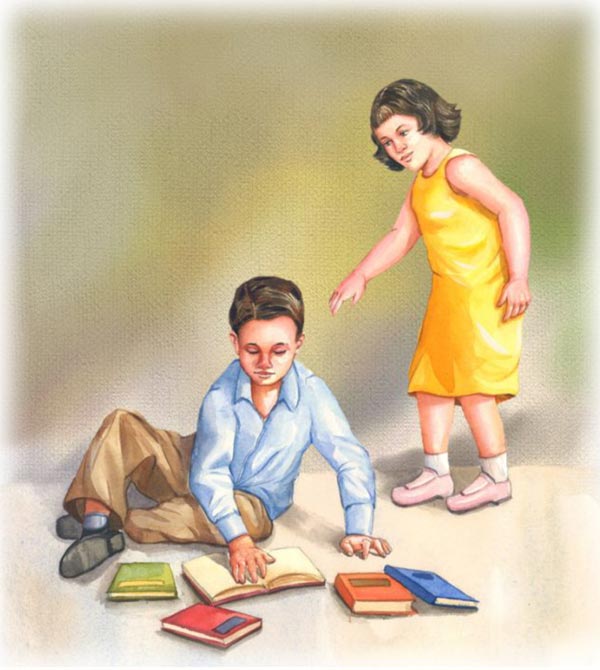
Nash's platonic love for books is entirely credited to his father, John Nash Sr. who was a World War I veteran. He had served in France as a lieutenant in the supply services and consequently, had not been in the actual front line of combat. Redneck John senior was originally from Texas and had obtained his B.S. Degree in Electrical Engineering from Texas Agricultural and Mechanical (Texas A. and M.). Serving his country in World War I, John Nash Sr. returned to America and took up a job as an Electrical Engineer at Appalachian Power Company. He often took his kids to his company's power lines for the weekend inspections, to teach them a thing or two about electricity, geology, weather and astronomy.
Back in the early 1930's, Bluefield was a small city in a comparatively remote geographical location in the Appalachians mountain range. It was not a community of scholars or that of high technology. It was a centre of businessmen, lawyers, contractors etc. The city owed its existence to the railroad and the rich nearby coal fields of West Virginia. Hence, the father quite understandably knew the significance of good education, he never bought toys or colouring books for his kids but would gift them science books and magazines instead.
Nash Senior's method of parenting was quite unconventional; he would always address his kids as adults and speak to them maturely, avoiding any sort of baby talk. From the intellectual viewpoint, it offered the sort of challenge that one had to learn from the world's knowledge, rather than from the knowledge of the immediate community one was being raised in.
Soon, Nash was enrolled in Bluefield School, a respectable High School for middle class Americans. Here he learnt a great deal of subjects like Science, English and Math. As a student, Nash was an underachiever and a certified daydreamer. He was ostensively poor in music and math which later, however, became his passion and domain of expertise. As a boy, Nash had a terrible handwriting and his complaints often reached home. The part reason for his bad handwriting was his technique of holding the pencil which he grabbed as a stick. To further deteriorate the art, he intended to use his left hand for writing, whereas his father urged him to use the right hand. Complying with father's suggestion didn't help John; his handwriting was still atrocious and sloppy enough to annoy his teachers.
At school Nash was distinctively opposite from his silent nature he portrayed at home, and had rightly earned a reputation of being a “big mouth”. Immensely talkative during lectures, Nash was highly capable of monopolizing his classmates to accomplish his agenda. Nash always stood apart from his classmates for his non-concentric behaviour and speech. Although he was a bright child, his school report cards differed. He compensated his poor grades by reading more books and science magazines after dinners. Books were Nash's best friends, always at his disposable whenever he craved for knowledge or company. The little genius often read the encyclopedia before going to bed, imagining the wonders of modern science and technology in his dreams. John Nash dreamt of becoming a scientist or an engineer like his father and sacredly read his science books.
Apart from science magazines, Nash loved reading 'LIFE' and 'TIMES' magazine. He relished reading about famous and influential people of his time and woolgathered of becoming one of them. This hunger for importance and social achievement was seeded deep inside his mind and it compounded over the years.
At the age of 12, quite certain of his destiny, the boy genius very meticulously lay his path of success. With no friends around, Nash amused himself by creating a makeshift lab in his bedroom. In this lab he conducted series of experiments, tinkering with different electrical gadgets, radio sets and home appliances. Curiosity backed with passion of electricity and electronic gadgets made him rig his home telephone, which annoyingly kept on ringing even after the receiver was lifted.


logical thiking
A true practitioner of logical thinking and scientific discipline, Nash quashed the superstitious ideologies and religion. One day Nash visited Bluefield Carnival, where he saw a performer sitting on an electric chair holding two swords, which emitted sparks from its tip when brought together. Other kids were spell bounded by the magicians stupefying feat, but Nash stood unimpressed.
The all charged up performer acted further and challenged his audience to perform the same. Nash created a buzz in the crowd when he confidently came forward and voluntarily repeated the trick successfully.

When his awestruck friends asked how he did it, he replied, “it's nothing to it…. It's just a static electricity” and continued with a long scientific explanation. Unlike other kids in their teens, Nash was not an ignorant tyke; he pursued knowledge over irrationality and facts over fantasy. It is fairly clear that he learnt more at home than he ever did in school.
Despite his sheer self taught brilliance, Nash was a loner. His mother Virginia was apprehensive about his social upbringing and urged Nash to socialize with other kids of his age at school and in the community. The parents knew that though Nash was a bright child, but he lacked enthusiasm to blend with others. On a number of occasions Virginia requested her daughter Martha to arrange a date for Nash. But Martha found her elder brother quite awkward and odd socially. In later years she quoted - “Johnny was always different. [My parents] knew he was different. And they knew he was bright. He always wanted to do things his way. Mother insisted I do things for him that I include him in my friendships.... but I wasn't too keen on showing off my somewhat odd brother.”
Alas, the siblings were never close early in their life, due to their sheer contradictory personalities. The lack of affection between the siblings was quite evident to the helpless parents. Virginia averted being a mere spectator and initiated Nash's social growth and development which became her lifelong mission. She encouraged her son to join Boy Scout Camps where he could learn discipline and leadership like his father. To evoke spiritualism in Nash, Virginia even sent him to attend bible classes on Sundays which he attended with lackluster faith. To overcome his shyness around girls Nash attended 'Floyd Ward Dancing School' and 'John Alder School for Manners', which more or less played no role in him winning friends. On weekends, when kids of his age hob-knobbed jubilantly, Nash preferred staying at home listening to the radio or lazing on the carpet reading science books.
In summers Nash was asked by his parents to work part-time as a sales boy at the Bluefield Daily Telegraph (a newspaper company) so that he could learn interpersonal skills. Virginia ensured that Nash never sat idle on holidays; she prompted her son to be active and outgoing throughout the day. Being close to his mother, Nash though not keen on any activities enforced upon him, imbibed to please his mother. Stiffed-necked Nash made it apparent to his family that he enjoyed his own company. He never tried hard to impress girls on his blind dates, which were usually fixed by his sister Martha. One incident vividly paints how aloof Nash was in his adolescent days. One day, Nash along with his parents, visited a dinner function held at 'Appalachian Power Company', where his father worked as a Senior Engineer. At the party when everyone was busy socializing, Nash was fascinated seeing an elevator. He boarded the elevator and took it up and down so many times that the elevator malfunctioned.
Ho-hum about sports, Nash was always chosen last; ironically, he was tall and well built for his age. He could have easily excelled at athletics but he chose brain power over physical attributes. While playing softball in the neighbourhood he would be lost in his dreams, cerebrating about prominent scientists, aerospace technology and inventions.
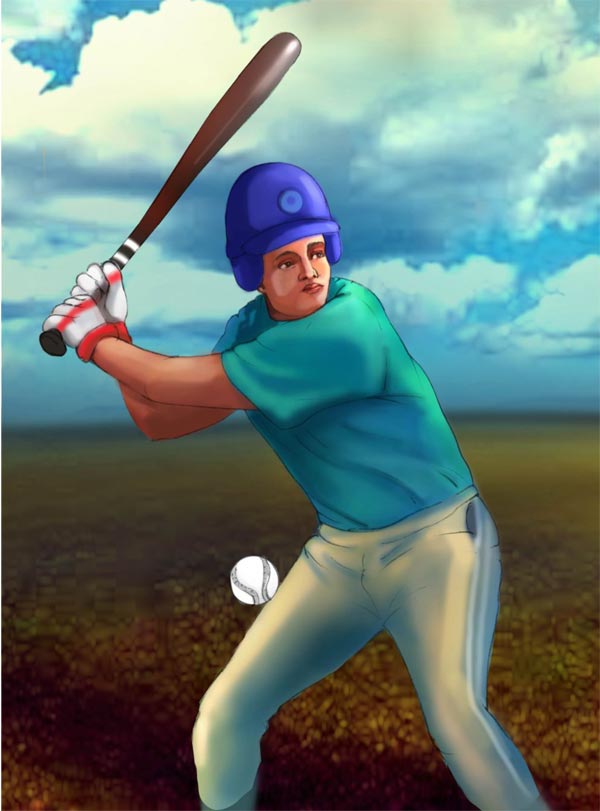
At the music hall instead of tripping the light fantastic toe with a girl, Nash would shake a leg with a dead wooden chair.Nothing attracted Nash except Science and Mathematics!
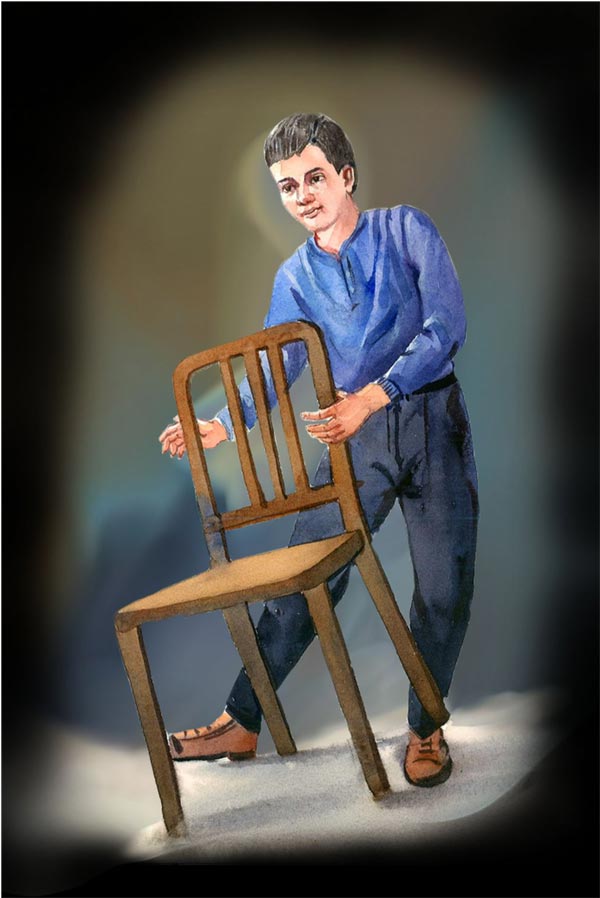

the troublemaker
By the age of 13, Nash had read 'Men of Mathematics' written by E.T. BELL- the prominent math evangelist of his era. Fascinated with the subject Nash grew eager to learn Mathematics himself, but his report card always demoed a B- grade. Nevertheless, an undeterred Nash, slowly and gradually started mastering his Mathematics. At the age of 14 he joined Bluefield College (a small school by design) and took up courses in Mathematics and Science, especially Chemistry. It is here that he began to show his talent in Mathematics, especially in problem solving.
During this time, World War II was ongoing in Europe and the scientists and the mathematicians had become heroes overnight. The scientific developments were saving a great number of American lives by building new age defence system, war machines and weapons for which mathematicians contributed significantly by calculating the complex formulas. It was a natural choice for Nash to pursue Mathematics; he conceived it would fulfill his desire of earning name and fame in the society. But the kid had a slightest idea of the profession.
Ironically, one man's loss is another man's gain. World War II boosted the sagging economy of the United States of America. With ever growing demands in Europe, the American Industries were the favourable beneficiaries and jobs flared-up everywhere. Nash was confident that he would land up a job for sure as a mathematician.
On the inauspicious morning of 7th December, 1941, Japan attacked Pearl Harbor and America was dragged into the atrocious World War II. In the turn of events, patriot John Nash Sr. took his kids to a deserted location where he trained them in rifle shooting. It was not paranoia, but an assumed fact that the Japanese were capable of invading America and if they were successful, then every citizen must be prepared to defend himself. Nash was pragmatic to join the armed forces as he wanted to stick to his routine life and explore math problems.
Nash though brilliant, was quite awkward socially in his teenage years; he would drift from one subject to another without a break. The mockery was part of his daily routine, it was quite easy to enrage him and trick him into a boxing match against a heavy contender. Sidelining the humiliation, Nash was earning a reputation of a whiz kid in his math class at school. The teachers and classmates remembered him solving math problems on board just by looking at them; he never used a paper and pencil to solve them.
Apart from demonstrating his genius, Nash was also an instigator of silly pranks. Once, he electrocuted his neighbour while shaking hands. Nash had carefully rigged a wire onto a battery behind his back so that he wouldn't get a shock, but as soon as someone else touched him, the person would get an electric shock. The buggy mind was always onto some mischief but he tactfully covered his tracks. With the passage of time Nash's shenanigans multiplied; on some occasion Nash would blow up things in the school's chemistry lab and frequently landed up at the principal's office.
Always up to something, 15 year old Nash made friends with equally reckless students Donald Raymond and Hermen Kirchner from his school. Together they made improvised bombs in Kirchenr's garage and detonated them at 'Crystal Rock' mountain range. A remote area which in its heyday was the hub of coal mines.
One day Nash came excitedly to school holding a lab beaker, claiming that he has prepared 'nitroglycerin” at home (a heavy yellow poisonous oily explosive liquid obtained by nitrating glycerol; used in making explosives and medically as a vasodilator). When the trio tested the formula throwing it over the cliff nothing happened, lucky them! There was a possibility that a huge portion of the mountain could have exploded and the kids would have landed in juvenile correctional institution for years. The bomb making experiments ended in a tragedy when Hermen Kirchner accidentally detonated a pipe bomb inside his garage and bled to death on his way to hospital. After the incident Donald Raymond was sent off to a boarding school by his parents, whereas Nash's parents were more or less in the dark about his dangerous after school adventures.
Death is inevitable; death is sad and leaves behind survivors to grieve. Losing a friend and relative at an early age is unspeakably painful. However, there is no information as to how Nash coped with the tragic situation as he seldom showed emotion, and camouflaged his feelings tactfully. Leaving behind the tragedy Nash was now making his presence felt in Math classes, his teachers and classmates thought of him very highly, just like the American society which considered scientists as heroes during WW2. After graduating from High School, Nash took admission in Carnegie Institute of Technology through a scholarship program he received at the 'George Westinghouse Competition'. This competition encouraged thousands of American students to participate, of which only ten were selected.
A channelized effort invariably bores a positive result and it is easy to drift away from our goals in adolescence. Seldom has a teenager got proper guidance from his peers. But these are the years when an individual is full of life, passion and great health and can be molded accordingly. Many goals can be achieved if teenagers are focused and disciplined.

Tryst with Numbers
In 1945, a 17 year old Nash arrived in Pittsburg. He had enrolled for an Electrical Engineering course in Carnegie Institute just like his father, but very soon he realized his incompetency in the chosen field. His shortcoming in Mechanical Drawing was evident and he switched his course to Chemical Engineering. In the new department, Nash frequently got into trouble for breaking lab equipment or at times disputing with professors over the methods of calculating chemical formulas. By the end of his first term, Nash was a rewarded with a pitiful 'C' grade in his report cards. Nash was clearly disappointed by the results but his math scores showed a great deal of promise. Luckily, at this juncture of his life, the institute's renowned Math professor John Millington Synge encouraged John Nash to take up Mathematics as his major. However, Nash was uncertain about his choice and wondered how would he earn his living as a full time mathematician? By second year, Nash switched to Mathematics fulltime and concentrated on the subject zealously. Showing his mathematical prowess, Nash became a star student of the Math professor while his peers found him extremely weird and awkward.
Daydreamer Nash was very rural and unsophisticated in his manners, he often left behind melting ice cream cones on his seats or at time while attending music lessons he would play the same note on the piano again and again. In the corridor if a fellow student greeted Nash by “hello,” he would curtly reply “why are you saying hello to me?”
Never once letting his guard down, John Nash was highly secretive. He mingled with peers occasionally but seldom joined them in their soirees. He was considered spooky, aloof, haughty and queer by his fellow classmates. Like his school days, Nash was constantly mocked, teased and bullied for his behaviour by many seniors at the institute. But a strong minded individual under-fire draws strength from the adversary. John Nash was no longer on the receiving end; he would sometimes make a pass in an indecent manner at his fellow students. He openly boasted his math skills and considered many students around him of inferior breed. His fellow classmates agreed that his mind worked faster and they were certain that he possessed great concentration abilities. Nash was indeed a genius but his eccentricity, sense of humour and timing was always awkward. Once, Nash's roommates decided to explore an underground steam system of the Carnegie Institute in mid afternoon. Treading deep inside the dark, dingy tunnel the boys lost their way out. While other boys were trying to figure out the escape route, Nash blubbered “gee, if we got trapped down here we'd have to turn homo.”
Time flew by on campus; Nash was now an undisputed star but a social outcast at the same time. He was highly ambitious and craved recognition for his skills; he wanted to achieve fame like other prominent intellectuals of his era. His pursuit of fame and recognition fetched him a wild card entry in Harvard's 'Putnam Math Competition'. A prestigious contest of young Math geniuses of American colleges, it was a perfect platform for Nash to display his talent. Nash was eager to participate in the contest as he wanted to know where he stood among other mathematicians of his age. However, gaining a 5th position, Nash lost to George Hinman, a brilliant Mathematician of Harvard Institute. Though the loss at Putnam was a bitter and ego shattering experience, Nash realized that he was a natural mathematician and was geared for any challenge.
Post Putnam Contest, Nash channeled his energies at academics. For better job prospects and effective resume Nash started taking Economics classes as well at the Institute. This gave a platform to his future economic discoveries and theories. By the year 1948, Nash graduated from Carnegie Institute of Technology (CIT) with Masters Degree in Mathematics. To earn a Ph.D. Nash had multiple choices for universities like Harvard, Princeton, Chicago and Michigan University, who were more than happy to accept Nash in their college to conduct research in his desired field. Evidently, Harvard and Princeton were his obvious choice due to their illustrious faculty, soaring budgets and infrastructure. However, the lukewarm response from Harvard during Putnam Competition made Nash choose Princeton. Back in those days, Princeton was home to geniuses like Albert Einstein (a great German Physicist) and John Von Nueman (a Hungarian-American Math and Economics Guru). They were the resident faculty of the university and were always accessible to the students.

in a league of its own
On Labour Day, a 20 year old Nash, towering 6'1, well built and filled with confidence, arrived at Princeton University. The university was situated in a quiet town, untouched by rapid post war development. The university was ideal for students to conduct their research without any distraction. At that time, what Paris was to painters and novelists, Princeton was to mathematicians.
For math lovers, Princeton was the centre of the universe. The university itself was born from the brain drain of Europe; it was home to many prominent scientists and mathematicians of the century. It was here at the Princeton University, where genius students contributed majorly in World War II by deciphering Japanese Naval codes, building accurate radar system, infrared detection devices, bomber aircrafts, long range rockets, torpedoes and depth charges. Getting admission to Princeton was a magnanimous achievement for John Nash, as every single student was handpicked by the university; they were America's top bright students, elite of the elites. On the very first day, all freshman students were lined up in West Common Room of the university, where Lefschetz, a French Mathematician, familiarized newcomers with the traditions and principles of this prestigious institute. Independent research was the top most priority and all the students were required to attend afternoon tea and dinner at the Fine Hall clad in a suit and behave like a gentleman all the time.
Post World War II, Princeton University was home to many brilliant poor Jews, young war veterans, wealthy foreigners and sons of working class American families. It was a haven for shy, lone and socially awkward geeks like Nash. The atmosphere at Princeton was highly competitive and yet very friendly, the geniuses at campus bumped into each other sizing up each other's capabilities, networking and solving math problems. The university gave Nash an ideal platform to express his emotion and intellect. Apart from Mathematics, Nash was deeply interested in Computers and Science Fiction Books. While pursuing his Ph.D., Nash found a researching job for United States Navy's classified project. During his tenure with the Navy, Nash was asked to conduct an independent research which he failed to complete.
He only attended visiting faculty lectures to learn new theories in the field of Mathematics and Economics. Very soon, Nash found himself in the good books of his professors as he was one of the few students who always asked the right sort of questions. Lost in his own world, Nash was always found whistling; he often passed by his friends without acknowledging their presence. Nash skillfully detached himself from the modus operandi of the Princeton; he would be found lying on the hall table, reading and talking to himself or cracking up formulas. Though awkward and unpolished, Nash was immensely confident about his talent. In his very first year when other scholars had already started submitting their research papers, Nash was busy sighting a unique topic. He had few ideas about Physics which was not his academic domain but he desired to meet Albert Einstein for the same.
Life takes a meaning if one becomes motivated and sets his goal high, like John Nash, who actuated by thoughts propelled towards his destination. He directly approached Albert Einstein's office and was well received by the genius himself. Nash put forward his ideas in the form of sketches and diagrams for 'Amending Quantum Theory' which was very politely shot down by the elderly genius. A few years later some theorist published an article with an approximation indistinguishable to Nash's theory.
Nash was a genius but his social skills turned away his peers as his sense of humour was childish and odd. If Nash was provoked he would often turn violent; at times he would chase his provokers and drop them on the floor with his sheer physical prowess. By the beginning of second year Nash was making a name for himself when he invented a two player strategy game called 'Game of Nash'. It was a modified version of 'Kriegspiel' (a German war game) or 'Backgammon' (one of the oldest board games for two players) which are popularly known worldwide.
The Game of Nash was remarkably unique. Unlike 'Chess', 'Tic-Tac-toe' and other board games it could never end in a draw. No matter how the players played the game, one player in the end would always win. The game tested the mettle of students' abilities under a nerve racking situation. Due to its oblique shape, a referee watching from the side or sitting on an elevated height could analyze the movements of both the players and predict the outcome. The game was an instant hit on the campus. However, when Nash and his co-designer tried to sell the game in the market they could not get any takers for this unique mind bending board game. Once while walking through the campus, John Von Neumann, a renowned Math genius, a professor, weapons expert and socialite came across a couple of students playing Nash Game. Intrigued by their activity he asked them what were they playing? To this one of the students replied “we are playing Nash”. Neumann's rendezvous with a genius was about to happen.
John Von Neumann once gave a lecture on “The Theory of Games & Economic Behaviour”, but the theory was not complete. The unsolved Math problem in the theory intrigued Nash… he had finally found his new topic of research. For the next few months Nash plunged deep into the formula and painstakingly solved the problem by applying pure Mathematics. By the end of the year Nash submitted his paper on 'Bargaining Theory'. He upped his ante by taking classes in International Trade and Commerce. His area of research expanded and he formed his own Game Theory which was later called 'Nash Equilibrium'. The theory had varied scope of application in the field of Economics, Political Science, Sociology and Evolutionary Biology. With his new economic discovery, Nash approached Neumann who rejected his ideas on the grounds of practicality. John Von Neumann, though a genius, yet, approached Nash's Equilibrium with a clouded mind. Decades later the theory came into practice and showed tremendous results and garnered Nash a Nobel Price.
After submitting his research papers, Nash earned a great deal of respect from his peers and professors equally. He won many admirers on campus but very few friends. One of the closest pals of Nash on the campus was 26 year old Llyod Shapely, a war veteran and five years elder to him. Shapley never found Nash as an eccentric or awkward, rather he respected Nash for his beautiful mind and persistent efforts in Mathematics. Nash had already submitted three theses in his second year and was considered a top candidate in the job market. On the other hand, Shapley, though a senior student, was yet to complete his research. Highly confident about his future, Nash frequently engaged himself in outrageous pranks. He rigged Shapley's bed which collapsed when one tried to sleep on it, he replaced bathroom bulbs with water filled balloons but fortunately no one was ever electrocuted. Nash would wake people from their deep slumber by pouring water in their ears or sometimes he would simply jump on top of them and rattle the bed vigorously.
By the end of 1949, John Nash walked out of the Princeton with a title of Dr. preceding his name. For his doctorate he wrote a paper on game theory. According to Peter Ordeshook, an American political scientist “The concept of a Nash equilibrium n-tuple is perhaps the most important idea in non-cooperative game theory. ... Whether we are analysing candidates' election strategies, the causes of war, agenda manipulation in legislatures, or the actions of interest groups, predictions about events reduce to a search for and description of equilibria. Put simply, equilibrium strategies are the things that we predict about people.”

classified mission
In 1950, Dr. John Nash was hired by the RAND Corporation, its acronym stood for Research and Development. A secretive Civilian Think Tank, RAND was administered by mathematicians, political scientists, economists and physicists. The corporation played a fundamental role during the Cold War era between the mighty Soviet Union and the emerging super power, United States of America.
Many major breakthroughs took place in the second half of the 20th century in the field of Defence and Aerospace and RAND masterminded several cloak-and-dagger ventures. The corporation facilitated to strengthen the defence of the United States through Development of ICBM'S (Inter Continental Ballistic Missile's), Mid Air Refueling System, unfailing warfare strategies, propagandas and clandestine operations. Nash worked in RAND's Math department, thanks to his Princeton research papers on Nash Equilibrium; his first project was to find variables for military strategies by applying pure Mathematics. Thereon, Nash worked on many classified projects in his windowless office for hours every day. The office building was accessible to members 24 hours a day which was perfect for Nash's eccentric lifestyle.
Nearly all men can face their adversity but if you want to test their real character, give them power! Now holding a prestigious high salaried job, Nash was still a child at heart… on numerous occasions his colleagues would find him walking the office corridor chewing paper cup, sporting an untucked shirt or whistling a repetitive tune of Bach song – “The Art of Fugue.” A gifted mathematician that he was, Nash solved the math problems faced by others in no time, earning himself a name and respect in the Math department. Though considered as a genius, Nash was highly unorganized and his office always appeared messy.
Heaps of papers, bank statements and banana skins decorated his desk and floor. The odd office hours left Nash with ample of time to engage in juvenile pranks, he left notes in cafeterias reading “Nash was here” or at times would simply record his whistle on dictaphone and place it outside the offices of colleagues who scorned his attitude.
Since his arrival at the RAND Corporation Nash was considered as the key asset of the Math department and his contribution earned him respect from other mathematicians. Despite having a top notch position, a fat pay cheque, highest level of security clearance and a residence in glamorous Santa Monica in Los Angeles, it didn't excite the 22 year old genius. He simply wanted to roam over Mathematics freely; he wanted to carry forward his research in the field of Economics and Math. Nash arrived at a conclusion that a university job was an ideal condition for his research and without waiting further he applied to Princeton, for teaching calculus to undergraduate students. However, due to university's stringent policy no former student was ever appointed for a long tenure. Nash now buffered between Princeton and RAND, teaching calculus before summers and saving the world during Princeton's summer break.
So far the life of Dr. Nash was smooth sailing; he was young, good looking and was engaged in unraveling math mysteries. However, the outbreak of Korean War made Nash uncomfortable to an extent of paranoia. Under Truman's presidency more than 120,000 soldiers were recruited and many of veteran World War II soldiers were recalled to join the Armed Forces. Nash feared the thought of being drafted for War and landing on a foreign shore only to get killed by a commie. Panic stricken, Nash made several frantic calls at RAND and Princeton to urge his colleagues to save him from the draft. The Math Community felt Nash was too valuable to be recruited in the infantry and came forward to his aid. Fellow mathematicians arranged a research job for Nash at the US Navy - Wheelers Lab and part-time professorship at MIT (Massachusetts Institute of Technology). Within weeks, the Office of Naval Research realized John Nash's true potential and contribution in their department and they officially wrote to the drafting committee to withdraw Nash from the list of prospective candidates. The Naval department argued stating that Dr. John Nash was one of the few trained Americans to conduct research on their highly classified project.
Nash was most likely to get a job at Princeton, a tradition the department was ready to break for the sake of his genius. But his arrogance was way off the charts and his aggressive nature and eccentricity became a huge hindrance for his appointment. His name was dropped stating his uncooperative attitude.
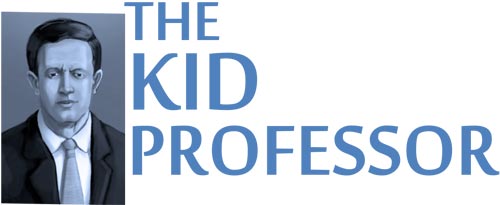
the kid professor
After losing a prestigious tenure of Princeton, 23 year old grief stricken Nash applied to MIT and was accepted with wide open arms. His recommendation letter from Princeton contained only one sentence, “This man is a genius!”
Nash moved to Boston and rented a cheap apartment which was at a walking distance from the university campus. Every morning Nash would walk to MIT greeted by mixed fragrances of soap and chocolate emitting from NECCO, a candy manufacturer and P&G, a multinational consumer goods company factory. At MIT Nash felt like a swan among ducks, as during that period the Math department of the institute had very few renowned names from Mathematics community. Nash was inspired by few mathematicians like Norman Levison who suffered mood swings and depression but helped young students at great length. He was like a father figure to John Nash. Another eccentric math genius on the campus was Norbert Wiener who suffered from bipolar disorder. Nash studied the behaviour of other mathematicians on the campus and mimicked their actions when he was alone. Nash was the youngest faculty member of MIT; he was even younger than some of the students around, hence was nicknamed “Kid Professor” by the students.
MIT was not at par when compared to Harvard or Princeton but post World War II and Sputnik (Sputnik was the first man-made satellite to orbit the earth built by the Russians) things turned dramatically for the institute. Thanks to the Cold War between America and Soviet Union, MIT was now funded by various departments of the armed forces and government secret organizations like the CIA and Atomic Energy Commission, to conduct military research. The arms race between the giants boosted sponsorship and hence, opened the doors of MIT for brilliant young minds of the country.
Nash worked on the top-secret projects of the United States Navy at Wheelers Lab. While Nash was strengthening the American Defenses, his colleagues were engaged in calculating stress levels of dams and bridges. Nash held a prominent status in the Mathematical Community and Defence department. On numerous occasions he was called up by the Pentagon during pressing situations to crack complex enemy codes which their sophisticated and expensive computers failed to achieve.
John Nash was a natural code breaker and a brilliant cryptographer. He could not only crack secret enemy codes but also formulate foolproof ciphers for the country's armed forces. During his seven year stint at MIT, Nash focused purely on his research and less on teaching. He would forget about his lectures and sometimes would simply put an unsolved math problem on a blackboard as an assignment for his students. During his lectures, he taught less and played more of mind games with the students. Shockingly unpredictable, without warning he would conduct surprise tests. His test paper would contain only four questions, the first one being what is your name, followed by three difficult math problems. Lacking prudish qualities like other professors, Nash mixed with fellow students in their soirees and celebration. He played bets on US presidential elections among students on campus and always won applying mathematical formulas. Nash was highly competitive and confident of his brilliance and would challenge his counterparts at the department with difficult math problems. He not only threw challenges but was always ready to take them head on. Nash solved a great number of mathematical problems at MIT with electrifying speed.
Towering 6'1 with masculine body Nash was a flamboyant in his walk, talk and attire. He had started lifting weights at the gym and never missed a chance to flaunt his muscles. Sometimes Nash would enter the classroom in his translucent white shirts simply to show off his physique. People considered him a “Bad Boy… but a great one – a great golden boy.”

Genius + Hard Work x Ego = John Nash
Unfortunately, with the passage of time, Nash's arrogance, eccentricity and behaviour multiplied and he became nastier in his talks. “You are a child!”, “You don't know a crap”, “How trivial!”, “How stupid!” and “You will never do anything!” were some of his favourite punch lines! Despite his malevolent behaviour, Nash was hands down a genius and no one on the campus could match his brilliance or dared to challenge him. In order to constantly keep his mind sharp, Nash hung around people whom he considered as an equal intellectual. He hated being challenged by people whom he considered cerebrally inferior.
His boastful escapades added to his already inflated ego. Once when Nash went swimming with a friend in Santa Monica Bay, both the swimmers were swept deep inside the sea by a strong current. With ample of struggle both youngsters made it back to the shore. While the friend lay on the sand gasping for breath, Nash stood up and said, “I wonder it was an accident, I think I will go back and see!”
Even at MIT Nash engaged in his silly business as usual and Warren Ambrose was mostly at the receiving end of his brash attitude and egocentric criticism. Ambrose was a Math professor known for his lengthy lectures; at the end of his each class Nash would send him bouquets of red roses making Ambrose look like a ballerina, taking a bow after a long performance. Nash would stick flyers in and around collage reading “Seminar on REAL Mathematics” taking digs at the elderly professor. Both Math gurus never saw eye to eye. Once, Nash openly mocked Ambrose's teaching methods in the presence of the entire staff. Enraged by the insult, Ambrose stood up and challenged Nash to solve “Manifolds Problem”- an unsolved geometry problem, avoided by all intellects. In a letter to one of his colleagues Ambrose pretty well described John Nash, he wrote:
“There's no significant news from here, as always. Martin is appointing John Nash to an Assistant Professorship (not the Nash at Illinois, the one out of Princeton by Steenrod) and I'm pretty annoyed at that. Nash is a childish bright guy who wants to be "basically original", which I suppose is fine for those who have some basic originality in them. He also makes a damned fool of himself in various ways contrary to this philosophy. He recently heard of the unsolved problem about imbedding a Riemannian manifold isometrically in Euclidean space, felt that this was his sort of thing, provided the problem is sufficiently worthwhile to justify his efforts; so he proceeded to write to everyone in the math society to check on that, was told that it probably was, and proceeded to announce that he had solved it, modulo details, and told Mackey he would like to talk about it at the Harvard Colloquium. Meanwhile he went to Levinson to inquire about a differential equation that intervened and Levinson says it is a system of partial differential equations and if he could only [get] to the essentially simpler analog of a single ordinary differential equation it would be a damned good paper - and Nash had only the vaguest notions about the whole thing. So it is generally conceded he is getting nowhere and making an even bigger ass of himself than he has been previously supposed by those with less insight than myself. But we've got him and saved ourselves the possibility of having gotten a real mathematician. He's a bright guy but conceited as Hell, childish as Wiener, hasty as X, obstreperous as Y, for arbitrary X and Y.”
At MIT, Nash was looked down by many of his counterparts, but he would prove them wrong at every nook and corner.
Nash devoted his entire time to 'Manifold Dimension Geometry' theory which was unsolved for many years. Many considered Nash's mathematical venture as a poor choice for research. According to mathematicians it was unsolvable, but Nash was already looking at the answer in his head. He now only wanted to pen the structural formula. During his initial stages of the research, Nash took guidance from many renowned mathematicians, one of them was Donald Spencer.
Nash used Spencer as a sounding board to complete his paper. Usually boastful and egocentric for being a genius, around Spencer, Nash always behaved calm and rationally, never complained and took criticism sportingly. Nash was focused, indifferent to criticism and had supreme confidence in his abilities. Donald Spencer described other mathematicians as sprinters whereas Nash was a long distance runner. Two years of research finally paid off when Nash successfully proved his Manifold Theory in front of a huge audience. Ambrose was the first one to applaud.
Shuttling between MIT, Wheelers Lab and RAND, John Nash largely lived inside his own head. Nash was immune to relationships; he never expressed his desire or emotion to anyone. He had a cold relation with his sister Martha, who always craved for her elder brothers warmth and affection. John had never been in a serious relationship before, but soon he developed a crush on Donald Newman, a freshman at MIT with a charming personality and prominent shrewdness. They grew closer and closer but their relation never blossomed as such kinships were considered taboo in American society.
The Black [Board] & White [Chalk] life of boy genius was once again filled with colours, but it arrived in the form of excruciating pain and Nash had to be hospitalized, where his varicose veins were removed. During the week at hospital, Nash was under great care of Nurse Eleanor Stier. When Nash was discharged he bumped into Eleanor again in the street; they spoke candidly for a while and then Nash took her for coat shopping. Five years older to Nash, Eleanor was floored to see Nash's charming personality and his respectable job at RAND and MIT. Soon the couple started living together; however, Nash kept his affair a secret. Within a year of courtship Eleanor got pregnant, she was worried about her future with Nash but seldom talked about it.
When Nash received the news of Eleanor's pregnancy he was delighted; he wanted a baby boy and wished to name his son John, but yet he was not ready to get married. Eleanor gave birth to a boy on June 19, 1953. Nash was by her side, but he didn't pay for any hospital expenses or baby care. John Nash was never sensitive towards others; he was a detached soul who wandered in search of puzzles and math challenges. He only got acquainted with others for satisfying his worldly needs.
Post pregnancy, the couple still lived together, but Nash never mentioned to Eleanor about them getting married. At dinner when Eleanor would complain about her problems, Nash would turn a deaf ear or would be plainly lost in his own mathematical cosmos. Adding misery to Eleanor's life, Nash would make a mockery of her inferior intelligence and upbringing. Every now and then he suggested that an MIT professor should marry someone who is equally smart and talented and a nurse like Eleanor will never fit the bill. Finding no light at the end of the tunnel, Eleanor moved out of Nash's house and took shelter at a sanatorium for unwed mothers. With no financial help from Nash, Eleanor's hardships grew more and more with each passing day. To meet her infant's needs she took up a 'living-in' job where she could keep her baby under her watchful eyes. Nash never came forward to support his child or Eleanor, though he would land up at her home on odd hours to see their baby.
On the outset Nash portrayed that he cared for his girlfriend and child and to prove the point he always carried a picture of Eleanor and their son in his wallet, but he never showed compassion towards them when it was expected. John Nash had a high salaried job; still choosing not to pay for his child was beyond bizarre. While climbing the ladder of success, Nash was brutally stepping over his loved ones. Unaware of the future, John Nash's life was now about to change dramatically.
the downfall
the downfall
Keeping his affair a secret, Nash met another bright fellow named Jack Bricker at MIT. Both were more than friends and were quiet open about it. It was Bricker, to whom Nash revealed his innermost secrets; he also confessed about his affair with Eleanor and his son John David Stier. Bricker felt he was betrayed, but he stood by Nash's side during his turmoil. Bricker visited Eleanor and often acted as a mediator whenever Nash and Eleanor clashed.
In the year 1954, in a twist of bizarre circumstances, cops of Santa Monica (L.A) arrested John Nash for an “Indecent Exposure” in a public urinal in the middle of the night. This arrest was a result of a police operation to catch homosexuals. Nash's actions were too outrageous for RAND Corporation, they could not afford to take a heat when Joe McCarthy (a US senator) was investigating defence departments and it's Non-Government Alliances for loopholes in their system. The management had no choice but to fire Nash for good. Considering Nash's high profile status his exit was a silent affair and it had to be maintained that way. Nash's high security clearance was revoked and his belongings were handed over to him at his residence. Dr. John Nash could now never return to RAND, his days of saving the world were over.
Unfazed by the incident, Nash returned to MIT as a full time professor. Apart from teaching and researching, Nash spent hours in the music library inside a sound proof booth listening to music composers like Bach and Mozart. It was here at the library that Nash met Alicia Larde, a vivacious, smart and talkative girl who was a physics student at MIT. Enthralled by Alicia's beauty Nash started dating her in 1955, only after Alicia made several attempts to woo her man of dreams. Alicia went weak on her knees seeing Nash's Greek God looks and brilliance. Ironically Nash was unaware of her existence until she made the first move. It is surprising to learn here that while he was dating Alicia, he still shared his special friendship with Jack Bricker.
Enamoured with bodily desires, the courtship with Alicia went on for months in a sotto-swing fashion. Nash was a wonderful boyfriend and Alicia couldn't have asked for more. Nash took her to meet his parents; together they attended Math Community Parties and also went on double date dinners but he never paid for her meal. Even on romantic dinners Nash would urge Alicia to share their bill equally. His shameful miserliness was due to the constant quest of finding Equilibrium in everything he came across.
By the year 1956 Alicia and Nash started living together. One night, Eleanor found out Nash's debauchery when she landed up at his doorstep unannounced. She barged inside the house and after finding Alicia in bed, she became hysterical! Nash somehow pacified the crying and angry Eleanor and dropped her home in his car. Young Alicia, though surprised was not angry at Nash for having a mistress and a child as she thought affluent people always indulge in such things… she was confident Nash would marry someone with a class and she believed that she was the one. A few days later Eleanor called Alicia complaining that she was stealing another woman's man and the father of her son. Alicia never paid heed to her dry pleas and continued her relationship with Nash.
Unresponsive to Eleanor's woes, Nash was enjoying his newly acquired normalcy in personal life. Nash refocused his attention to numbers. He wanted a new puzzle to solve and keep his mind off distractions. During his full time tenure at MIT, Nash received a 3 year research grant from Sloan Fellowship. Keeping personal woes behind, Nash started attending 'Seattle Mathematician Meetings' hob-knobbing with great math geniuses of the country. Nash was among his own people and living a life of what he had always dreamt of in Carnegie and Princeton. One night after a party when Nash was relaxing in his hotel suite, he got a call from his father John Nash Sr. The father on the other end of line was furious as hell, in his strong voice he ordered his son “Don't come home…. Go right to Boston and make a right! Marry the girl!” Nash was stunned to realize that Eleanor had visited his parents behind his back; his closely guarded secret was out. He said to a friend “My perfect world is ruined; my perfect little world is ruined.” His world had turned upside down.
Distressed, Nash went to Boston to talk his way out with Eleanor but it was a vain attempt. He even offered to adopt his son but Eleanor refused strongly. Post pregnancy, Eleanor had suffered a lot, her finances were dried up and she had no choice but to keep her son in foster care. She hired lawyers who threatened Nash to pay for child support or face severe court punishment. A stubborn Nash simply denied paying any money, but after John Bricker's advice he agreed to pay for the child support. In retaliation to this episode, Nash never married Eleanor and resumed his relation with Alicia.
Living in the fool's paradise Nash thought his worrying days were over, but soon a hurricane swept through MIT. Joe McCarthy's witch hunt to find communists in free American society was in its full swing. His wave of destruction had reached MIT campus, where many faculty professors before World War II were active communist party members and now faced wrath from the government. The sight of Military Police dragging out professors suspecting communist nexus left a deep impact on Nash's mind and triggered paranoia. Nash, on his way to success, was inducing pain to others; apparently it was time to endure some.
In 1956 a tragedy barged in his life…John Nash senior passed away in old age. For the very first time Nash was remorseful witnessing a personal loss. He had never faced a personal tragedy before and the demise of his father came as a huge shock, more so because it came at the time when he was enjoying his tenure at MIT. Nash felt tremendous pressure on his shoulders as he now had to fit in the shoes of man of the house. Few mourning months later, under the pressure from Virginia and Martha, Nash got engaged to Alicia. He never gave her a ring but promised that he would get her the diamond directly from the wholesaler which would be cheaper. The couple moved to New York while Nash continued his research at the 'Institute of Advance Studies' (IAS). The IAS was a perfect abode for researchers due its silent corridors, student less campus and wide spread green lawn surrounded by trees. Many foreign intellectuals visited IAS for sabbatical and to pursue special assignments. The visitors called it the “Hotel of Intellectuals”.
Nash engaged himself in solving 'Quantum Theory' while Alicia took up a job in Atomic Research Company. By the end of his term in IAS in 1957, Alicia and Nash read their marriage vows in a Washington church, in the presence of close family members. The honeymoon period was wonderful; Nash would work at the institute in the morning and take dinner in his wife's company. Alicia lacked ménage and never cooked meals; the couple always went to restaurants or had dinner at math parties. Years flew by peacefully and the couple complimented each other perfectly. Even after knowing each other for years now, Alicia was still mesmerized by Nash's charismatic persona. She always observed his body language, dressing sense, behaviour, the way he talked and how others reacted to him. Her overflowing love was evident to Nash, but he resisted getting carried away.
Nash was synonym to the word 'brash'; the egocentric genius would bump into someone if he considered them important for his research. He had a tendency to involve different mathematicians for solving the Quantum Theory. To this very day people believe that his Quantum Theory project triggered his paranoia and schizophrenia but there is no evidence to substantiate this.
A slight glimpse of success came at the age of 30. Nash was featured in the 'Fortune' magazine as the best new thing in Math World, and they called him “New Math”- “The most brilliant of the younger generation of new ambidextrous mathematicians”. His childhood dream of appearing in a magazine was fulfilled but Nash was still unsatisfied as he had not yet won an award for his work. Fields Medal - the highest honour given to a mathematician was Nash's ultimate goal. He believed that by winning the title he would be recognized as a great mathematician globally. The Quantum Theory was his ticket to Fields; he proved the solution in no time. Feeling confident about his medal, Nash received a huge blow to his fragile ego when he learnt that an Italian Mathematician, De Giorgi, had proved the Quantum Theory few days before him. The two math gurus shared their name for the discovery, but for the great John Nash the zeitgeist was worse than losing. Nash did not receive 'Fields' award that year, infact, he never won any award for his contributions in the next few decades as well.
In the constant state of oblivion, Nash feared his creative days were over; he was dissatisfied with his so far achievements, which was untrue on his part. Nash was disappointed that he hadn't won a single award or title to mark his dominance in Math Community and adding to his woes there was no job offer from Harvard and Princeton either. Nash's lamentable demeanour was instigated by a disbelief in the Math Community that 30 was the peak of one's creativity, that no mathematician has ever achieved greatness in his 50's by resolving a revolutionary math problem. Nash wanted to defy the myth at any cost; his next project was “Riemann Hypothesis”, an unchartered territory no mathematician had dared to embark. Widely assumed as an impossible math problem looming over mathematicians for decades, many great minds considered it unsolvable!
A highly vulnerable Nash was fascinated by numbers of the stock market and overconfidently believed that by applying mathematical formulas great profits could be achieved. He invested his mother's entire savings into different stocks which by the end of the year, turned out to be the biggest loss. He not only lost his reputation of a calculated individual by the wild-cat-scheme but also lost his mother's wealth. Nash promised his mother that he would repay her entire money which was unlikely.
Taking time from his research Nash went on a trip to Europe along with Alicia, which was sort of their second honeymoon. Still madly in love, the couple then went to London, Paris and Belgium embracing local beauty and culture. Nash fulfilled his promise when he purchased a diamond from a wholesaler in Belgium. During their visit to Europe, Nash attended many Mathematic conclaves. On their way back to America, Alicia broke the news that she was pregnant. Nash was once again filled with joy! He took great of care of his wife and ensured that she lived comfortably. Alicia rather was part happy and part sad as she had to abandon her high salaried job which ultimately meant end of her financial freedom. Usually jubilant, Nash would sometimes lose his cool at parties when he would find Alicia smoking or drinking. Audaciously vocal, Nash confessed that he wanted to produce children and that is why he had got married to Alicia. Sighting more responsibility Nash returned to MIT for a new term, but he denied taking a full tenure as he wanted to work at Harvard University for the sake of his prestige. He also wanted a job offer from Princeton or its equaling university in Europe.
In the year 1960, Nash's madness blew way out of proportion when right in the middle of his lecture he turned towards a very bright student and asked him to take over his class. Stating this, Nash went straight away to Washington DC. Two weeks later, a bewildered Nash arrived at MIT holding a New York Times edition, and announced that aliens were trying to contact him through coded messages encrypted in the paper, which only he could decipher. Alicia knew something was wrong with her husband but never imagined the magnitude of Nash's illness. His friends, who knew Nash as an eccentric creature, witnessed a whole new deal of insanity. Once a common friend of Alicia and Nash accompanied them on a long drive, during which Nash kept switching stations on the radio. He believed that he could intercept the radio signals of the aliens who were trying to strike a communication with him.
Nash's insanity did not cease there. One day at MIT, he called a freshman and handed over his expired driving license by writing a student's nickname - St. Louis and called it “Intergalactic Drivers License”. Unaware of Nash's delusions the student took it sportingly, but the problem was greater than it appeared to be. Day by day, John Nash's mental condition depleted. The McCarty episode often gave him nightmares that communists were sprawling through the country, targeting honest civilians to join their evil cause. Nash concluded that people wearing red neckties were members of “Crypto Communist Party”. In his own words, Nash later described “The staff at my university, the Massachusetts Institute of Technology, and later all of Boston were behaving strangely towards me.... I started to see crypto-communists everywhere... I started to think I was a man of great religious importance, and to hear voices all the time. I began to hear something like telephone calls in my head, from people opposed to my ideas....The delirium was like a dream from which I seemed never to awake.”
Paranoia is usually a common symptom traced in schizophrenia patients. What Nash was seeing was a combination of his past experience at RAND, Wheelers Lab and Princeton. The administration of MIT soon rolled into action when they discovered John Nash was sending great numbers of letters to foreign embassies in Washington DC through university's postal service. These letters contained lengthy pleads to different countries to form a “One World Government”. The mails were retrieved by management before reaching the embassies. The directors of MIT decided to keep the matter closely guarded as Dr. John Nash was an honorable member of Math Department and an important asset of the institute.
Incognizant of Nash's mental problems, University of Chicago offered him the job of a full time professorship. Nash promptly wrote back that he denies taking up the position as he is scheduled to become “Emperor of Antarctica.” His behaviour at the university was now intolerable; he would attend his colleague's seminar and declare that his face was morphed by the face of Pope XXIII on the cover of life magazine. Under the dreadful clutches of paranoid schizophrenia, John Nash once made a complete fool of himself while conducting a seminar; in the middle of his presentation he started talking gibberish and walked out of the auditorium. His eccentricities now horrified Alicia when she found that Nash was writing strange letters to United Nation in blue, black, red and green ink advocating forming a “One World Government”.
Nash's unpredictable nature dangerously evoked fears among his friends and family. One minute he would be agitated and the next moment would be completely calm and lost in his own world. One dreadful night Alicia woke up in horror to find that Nash had covered their bedroom wall with black spots; she concluded Nash's behaviour was due to the pressure of being a parent or related to his tenure at MIT. Alicia was a constant recipient of Nash's wrath, he would get suspicious and angry without logical reasons, and even threatened Alicia of taking out their money from the bank and settling in Europe as refugees. One night Nash woke up Alicia and urged her to accompany him to Washington DC where he wanted to put letters in drop boxes of different embassies.
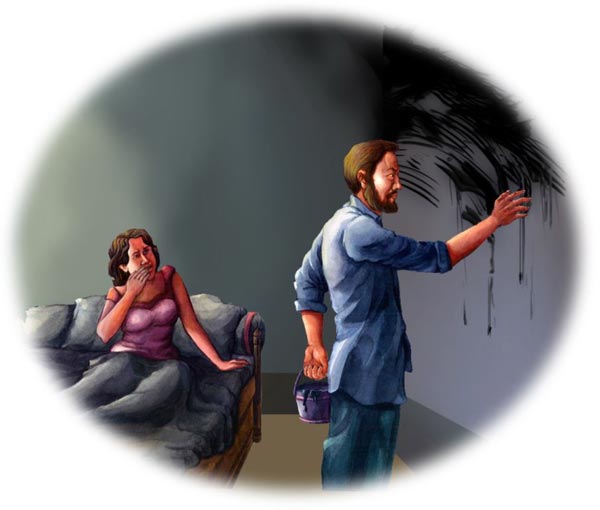
Alicia knew that Nash desperately needed help now. She stood by his side as she wanted to save his career and preserve his intellect! Colleagues and close friends suggested Alicia to admit Nash for “Insulin and Shock Therapy”. But the caring wife was staunchly against it as she desired to keep Nash's genius intact. Over the few months, Nash's condition deteriorated and he would get violent and extremely angry. Alicia was convinced it was time to hospitalize Nash as he was becoming a threat to her and their unborn child.
Whether a genius like Dr. John Nash should be institutionalized or not, was a highly controversial decision. It was a moot point as many professors at MIT argued that Nash's behaviour was not serious as it appeared to be. They concluded that with proper rest and medication he could attain a healthy state of mind.
Seeing the worse side of Nash, Alicia couldn't bear it anymore and in an unguarded moment she made a decision. In April 1959, two cops landed at her apartment to take Nash to a mental asylum. Assuming the cops as members of “Crypto Communist Party” Nash protested his arrest. A scuffle broke out between Nash and the cops, who soon overpowered him and dragged him to the police car. Nash was taken to McLean Hospital for treatment of mental instability. On learning about her son's arrest, Virginia arrived at the hospital to see her son. Finding Johnny in a tattered condition Virginia was devastated; she wept and wept and wept.
Meanwhile, Alicia requested her husband's colleague at MIT to visit him frequently, hoping it would help in his mental recovery, to which they obliged happily. The kindhearted professors and friends who visited Nash at the hospital found him perfectly normal and in a sane frame of mind. Nash barefacedly agreed that he was delusional but not insane. He was very nice and rational to all his visitors who wondered that why on earth was Nash in solitary confinement? But bizarre characters of which he talked about all the time, his tense, suspicious, guarded behaviour, the blankness of his facial expression and his awkward speech all pointed towards an extreme case of paranoid schizophrenia.
Three weeks into the treatment Nash behaved as if nothing was wrong with him. He spoke normally and agreed about the delusions and bizarre letters to the UN. For some reason he blamed Alicia for his hospitalization without and threatened to divorce her and take away all his savings from the bank and settle alone in Europe. He said - “I would not dare to say that there is a direct relation between Mathematics and madness, but there is no doubt that great mathematicians suffer from maniacal characteristics, delirium and symptoms of schizophrenia.”
Nash now appeared normal and no longer claimed to be a prince of peace or Emperor of Antarctica. Seeing improvements in Nash, the doctors allowed him for morning and evening leisure walks in the hospital premises without supervision. Nash knew he was completely sane and was hospitalized without his will; he hired a lawyer Bernard E. Bradley and psychiatrist Warren Stearns to file a petition for his immediate release. While interviewing Nash, Stearns was convinced that his patient was completely normal. On 28th May, just a week before Nash was released from the hospital, Alicia gave birth to a baby boy. Soon after his release, in a grossly unconventional way, Nash resigned at MIT and in July he convinced Alicia to leave their baby under her mother's care and set out for Europe. Though skeptical about his move, Alicia agreed to her husband's irrational demands.
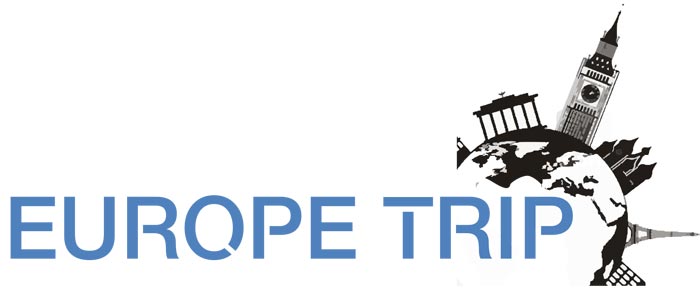
europe trip
Leaving behind their newborn unnamed baby, the couple reached London and then went to Paris. Only this time… their affable love was missing.’
Throughout their journey Alicia kept a tight vigil on her husband, who now appeared sober and well behaved. The reason to visit Europe was to attend the International Seminar of Mathematicians. Rubbing shoulders with likeminded people at the conference restored Nash's confidence in himself. Alicia was happy seeing improvements in her husband, but soon the news that Soviets had developed an ICBM capable of reaching American shores, triggered Nash's paranoia. Nash now for no reason delayed their return to the US. Alicia who thought her woes had ended was terrified to learn about Nash's relapse. To break away from the surmounting problems, Alicia visited her cousin in Italy to restore her peace of mind. It was here that she received the news that her husband had left Paris for Luxemburg. On 29th July, 1960, John Nash arrived at the US Embassy of Luxemburg to renounce his American Citizenship. He submitted his passport to officers who turned down his application. Section 1481 of the 1941 immigration act permitted American citizens to give up their citizenship. Nash was very well aware of the clause and wanted to exercise his rights.
Pitifully Nash was again delusional; he couldn't distinguish reality from fantasy and a constant voice in his head kept him awake at nights. He went to Geneva to renounce his American Citizenship and to acquire official refugee status which was straight away denied. For attaining refugee status, US embassy's official statement was necessary which he could not acquire. Meanwhile, Alicia returned to Paris; worried about Nash, she requested the Paris Police to find her truant husband.
Unaware of his condition, Nash was living under false identity and was constantly switching his hotels. He would open several bank accounts and wire money into them. He destroyed his passport in Europe which meant he was stateless, and that meant, a refugee status would be granted to him. When Nash was apprehended by police he was found sporting long hair and a thick beard. Nash was deported to US, but in his own words he described that he was “brought to US on a ship chained like a slave.” In actuality, he was sent by an airplane comfortably with Alicia next to him.
In 1961, Nash's mental condition worsened; he turned violent and self destructible. Sighting no option, John Nash was once again hospitalized, but this time in Trenton State Hospital for insanity. The hospital was famous for its patient's inhuman conditions and notorious for its overcrowding and aggressive medical treatments – including drugs, electroshock and insulin coma therapy.
For the next six weeks Nash lived a deplorable life where he was given insulin coma therapy and shock treatment. During his testing times, his colleagues from Princeton and IAS came forward to help him. He was shifted to a better ward, thanks to the donation collected by people who respected, admired and cared for the genius. All his life John Nash gave misery to people around him, but when his chips were down, he got a fresh lease of life from the very same individuals.
After painfully enduring the gruesome treatment Nash was kept under close observation for six months. He was released one month after his 33rd birthday; he became even-tempered and was no longer a threat to himself and society. Soon after his release, Nash visited Princeton and desired to continue his research on Quantum Fluids, which he had envisioned during his psychotic treatment at Trenton hospital. He learnt French and wanted to indite a paper for the French Mathematic Magazine. For his contribution in the field of Mathematics, Nash was invited to Paris but this time Alicia did not accompany him. It was distinctively clear that their marriage was over!
In 1962, putting up a strong face, Nash attended World Mathematics Congress and read his research paper. He showed signs of great improvement but soon after returning to Princeton his paranoia resurfaced. In 1963, John Nash self volunteered to Carrier Mental Institute, where for next five months he underwent a series of painful shock treatment and insulin coma therapy. During his treatment at Carrier Mental Institute, Howard S Mele, a resident psychiatrist of the institute came to Nash's assistance, he convinced Nash to take antipsychotic drugs for fast recovery. Under Mele's supervision Nash strained his every nerve and showed remarkable progress. The treatment and counseling worked wonders for Nash as he was able to reinstate his sanity.
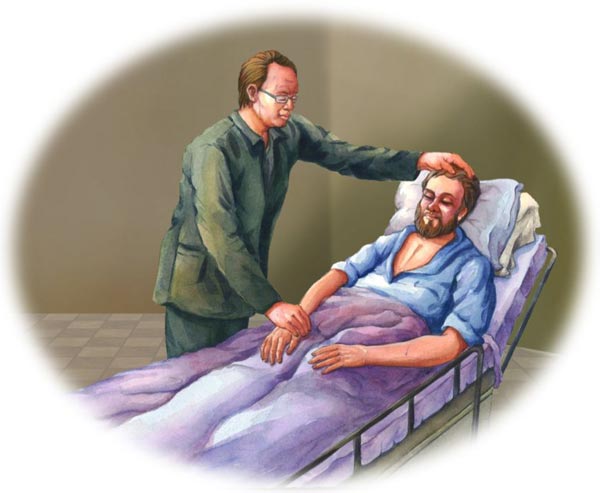
After a series of prolonged misery Nash had become very humble; all his arrogance and ego was gone. He received his visitors with genuine warmth and courtesy. Nash was optimistic about his future as his life was slowly coming back to normal. On his doctor's advice he started socializing and going on blind dates. Nash was hopeful that he would remarry Alicia some day or atleast would settle down with someone and start a family. Nash described his recovery as “It's almost as if a demon might have passed from one host to another.”

The Long Recovery
Year 1969, a 40 year old Nash appeared quite old than his genuine age. His handsome face was wrinkled, those gaudy shoulder now dropped and he invariably wore a tired expression. The lonely genius was left alone, the anchor of his life Alicia was missing and his mother had passed away leaving behind a small trust fund. In pursuit of care and happiness Nash moved into Martha's house who couldn't handle his eccentric behaviour around her children. Soon she arranged for Nash's hospitalization at De-Jorntte State Sanatorium. The last straw was drawn; after a few tests, the doctors at the hospital declared John Nash paranoid but capable to handle himself properly and were set at liberty.
Soon after his acquaintance (release) Nash broke all his ties with Martha and moved to Princeton forever. His run of ill luck was finally over.
Prosperity is not for stock and stones! Spirited John Nash was determined to rebuild his life and career at a snail's pace. He arrived at the Princeton and convinced the administration for entry in the college premises and using the facilities. Princeton was more than happy to help John Nash reinstate his life, after all the genius was one of them. Nash's recovery was a long one, spanning three decades, where at every step people came forward to help him.
At the university, students were stunned by odd math equations and coded messages on classroom blackboards. Rumours and myth rounded the college that a “Phantom” was looming in the campus. Many students added their version to the hue and cry that the phantom was an old professor who couldn't solve a math problem and had turned crazy. Some students even asserted that the phantom was here to protect them. While few claimed to see the phantom walking the corridor wearing red sneakers and strange checkered pants, in reality, it was Nash who was going around the campus at night leaving behind unsolved math formulas.

In 1970, Alicia rendered compassion and generosity by taking Nash back in her life. Though the couple had officially divorced seven years back, they started living together again. Nash was reunited with his son John and helped him with his homework; he even taught him chess and gave money to Alicia out of his mother's trust fund. A normal family life fastened Nash's recovery process. By mid 1970's, Nash showed a keen interest in computers and programming. He spent hours at Princeton Library learning about computers and programming languages. Nash's quest for fame and recognition finally arrived in 1978 when he was awarded 'John Von Neumann Theory Prize' by the Operations Research Society for his formulation of Non-cooperative Equilibrium. Though success came late, John Nash cherished every moment of it with his family.
In a strange manner Nash experienced emotions like never before; he reconciled with Eleanor and amended differences with his first child John Davis. Davis however could never relate to his father as whenever they would meet, Nash would always talk about his own problems John Davis never spoke to Nash again for the next 17 years. He found a mentally ill father in his life quite disturbing. Back at home Johnny, son of Alicia and Nash showed keen interest in Mathematics like his father. He was a brilliant student and completed his Ph.D. in 1985.
In mid 1980's, Ariel Rubinstein, a professor from Israel wrote a 10 page report on potential candidates for the Nobel Prize. John Nash's name topped the list. John Nash who lived three decades anonymously was considered long dead by many math intellectuals.
By 1990, Nash showed no signs of paranoia. His talks and behaviour became very rational and he sounded like a normal person. Psychiatrists claimed that the antipsychotic drugs played a significant role in Nash's recovery. However, he baffled the Psychiatric community by confessing that he had stopped taking the pills long back.
John Nash's improvement was not only unique but was also rare as it was nothing short of miracle. In an interview Nash quoted – “I seem to be thinking rationally again in the style that is characteristic of scientists. However, this is not entirely a matter of joy as if someone returned from physical disability to good physical health.”

the nobel prize
In 1994, Dr. John Nash Jr. received the Nobel Memorial Prize in Economic Science as a result of his game theory, which he had developed as a student at Princeton. At the time he received the news at Princeton, the shy genius, jokingly said that hopefully it will improve his credit rating and he will receive a credit card which he needed the most. Nash felt sad that he was sharing the prize money with other two members, but he rested on his laurels and global recognition. Nash was accompanied by Alicia during the Nobel Prize Award ceremony.
“Though I had success in my research both when I was mad and when I was not, eventually I felt that my work would be better respected if I thought and acted like a 'normal' person.”
Nash showed a tremendous recovery since his Nobel Prize. Soon after receiving the award, Nash went to his estranged first son John Davies (with Eleanor) whom he had last met in the 1970's.
Restoring his amour-propre, John Nash married Alicia again in 2001 at his small home located in Princeton. Nothing had changed much at home since his Nobel Prize, except for a few new appliances in the kitchen and some new furniture, though nothing fancy. He took lunch at college and met the same old friends he had known for the last 30 years. Nash had started his new research and loved playing computer games. Post his illness, research was not his prime objective but forging relations was. Nash had reconciled with his old friends and relatives whom he had considered as enemies before. He even buried his hatchet and reached his younger sister Martha back in Bluefield’s and since then they were talking to each other on phone, once a week without fail.
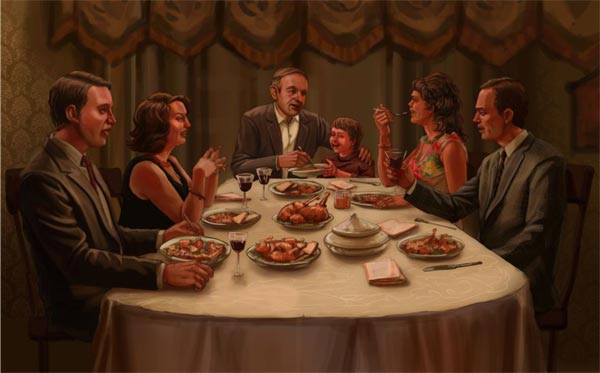
At home, a henpecked husband, Nash helped Alicia with her routine chores and finances. Together like any ordinary couple they would argue over trivial issues and reconcile immediately. Alicia was the decision maker of the house, though a genius Nash seldom gave his suggestions in matters like refurnishing kitchen or installation of boilers. For Nash the supreme objective of life was now his son’s well being. Johnny after a short stint of Professorship at MIT was struck with schizophrenia. Unlike Nash, his son was diagnosed at a very early stage. Accompanying his son daily for therapy sessions, taking lunch together and playing chess in free time was John Nash’s Penelope’s web. Amidst difficulties Nash was hopeful that like him John will be cured soon.
Apart from his mathematical breakthroughs, Nash now wanted to give more to those who helped him during his testing times. He counted his blessings daily and thanked everyone who supported him throughout his career. He was grateful for small things which he took for granted during his MIT years, like having a place to live, a car, money and truehearted friends on beck of a call.
Nash’s recovery was initiated by his strong will; he knew he could turn things around for his own good and brilliantly managed to achieve it. He was ready to face his inner demons by his powers of rational thinking and scientific reasoning.
Nash had suggested hypotheses on mental illness, comparing not thinking in an acceptable manner, or being "insane" and not fitting into a usual social function, to being "on strike" from an economic point of view.
The master had developed work on the role of money in society. Within the framing theorem that people can be controlled and motivated by money that they may not be able to reason rationally about it, he had criticised interest groups that promoted a quasi-doctrines based on Keynesian Economics that permitted manipulative short-term inflation and debt tactics that ultimately undermine currencies.
Nash received an honorary degree, Doctor of Science and Technology, from Carnegie Mellon University in 1999. In 2001, a movie based on the life of John Nash titled, “A Beautiful Mind” was released.
John Nash received an Honorary Degree in Economics from the University of Naples Federico II on 19th of March, 2003 and an Honorary Doctorate in Economics from the University of Antwerp in April 2007. Here he was the keynote speaker at a conference on Game Theory. He had also been a prolific guest speaker at a number of world-class events, such as the Warwick Economics Summit in 2005 held at the University of Warwick.
In 2011, Nash's work involved ventures in advanced game theory, including partial agency. His website home page details his projects that include logic, game theory, cosmology and gravitation. Nash’s remarkable work came to a sudden halt with his death on 23 May 2015. Both John and his wife died in a car crash. He was 86 years old and his wife was 82 years old at that time.
The ace has harked back to Mathematics to unravel the mystery and conundrum left untouched by the erstwhile math pundits. This intellective resurrection from the ‘cancer of mind’ is irrefutable augury that miracles do happen. Self belief and volition is a potent formula that we all are endowed with. Dive deep within and you will discover your natural endowment. The triumph of this genius has been an inspiration to many around the world and he truly was a miracle on this earth.
Biography of John Nash | 6 Comments >>
6 --Comments
I want to thnx for the efforts you have made in composing this blog post. I am hoping the same top-grade post from you in the future as well. In fact your creative writing skill has inspired me to start my own blog now. Truly the blogging is spreading its wings rapidly. Your write up is a good model of it.
My boyfriend bookmarked this link and I came here accidentally. Thanks a lot with this post! Really a good read.
Amazing!
I’m not that much of a internet reader to be honest but your sites really nice, keep it up! I'll go ahead and bookmark your website to come back later. All the best
I'm really enjoying the design and layout of your website. It's a very easy on the eyes which makes it much more pleasant for me to come here and visit more often.
Leave Comment.
Your email address will not be published. Required fields are marked.
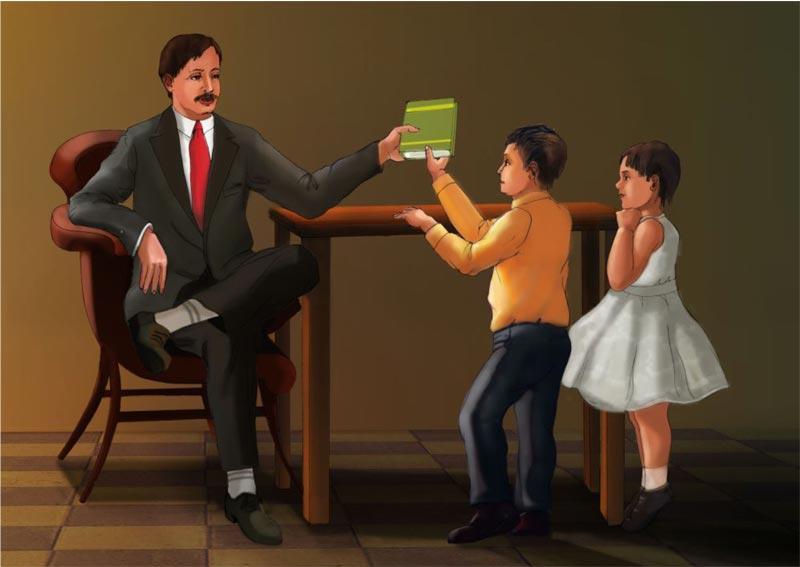


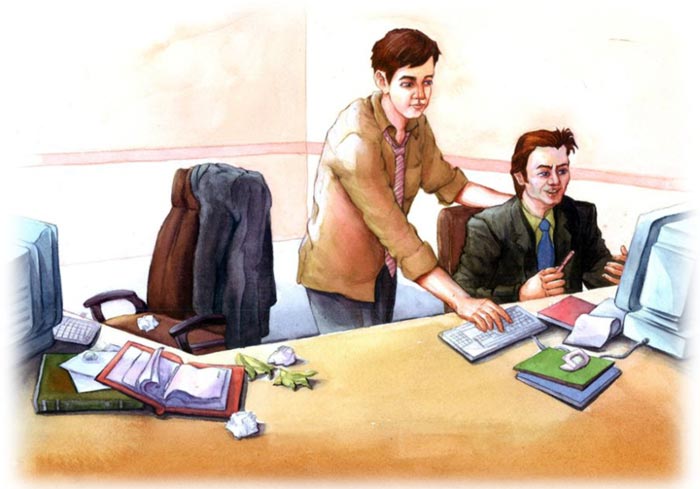
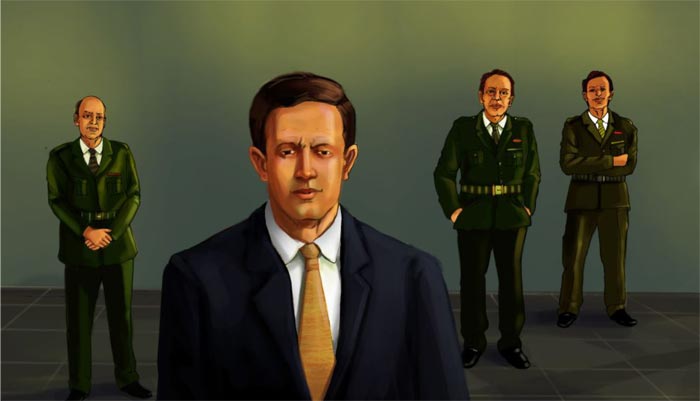
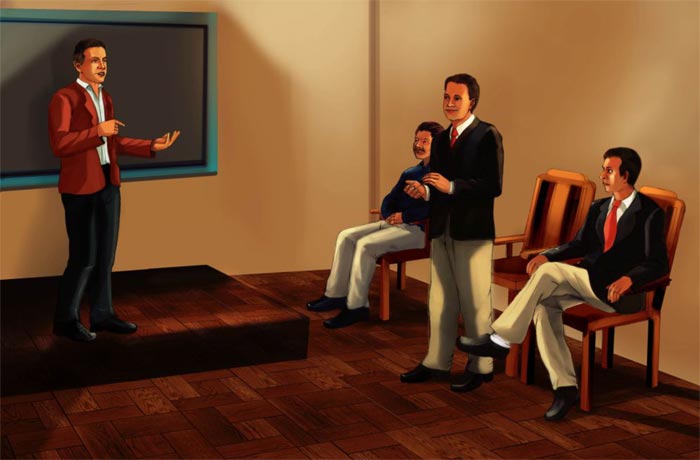

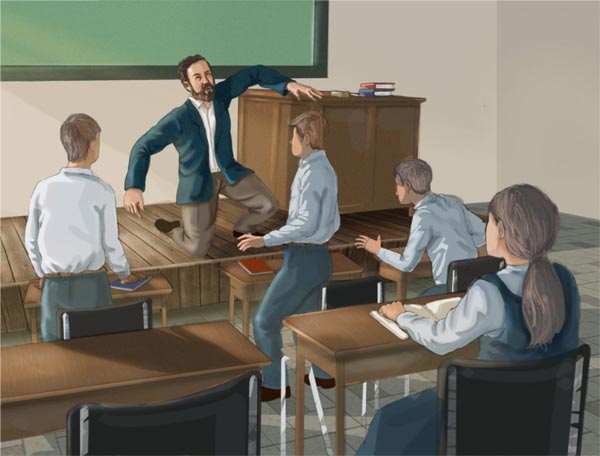
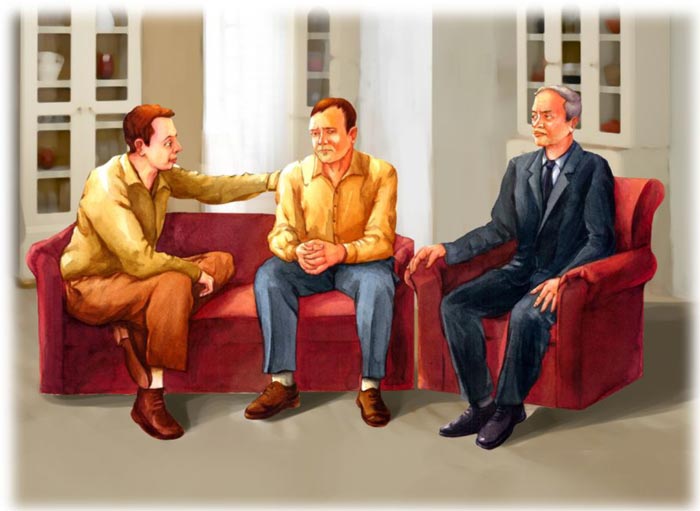
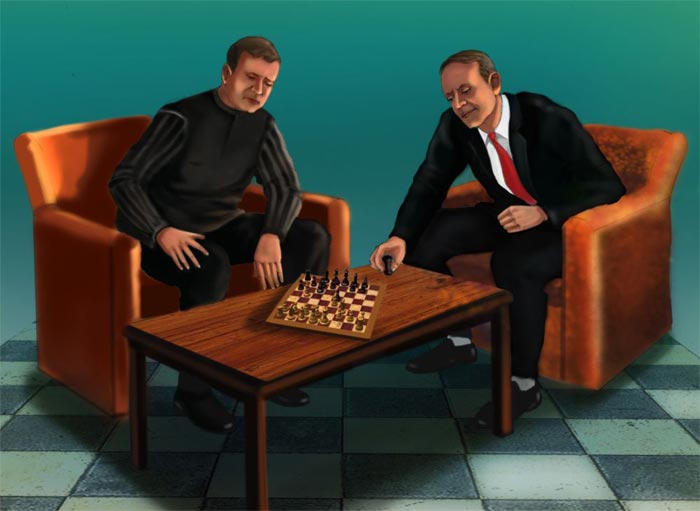


Biography of John Nash: moral : --You can still be successful even with mental illnesses. The main message is that no matter what problems you have, you can still be successful and not give up.